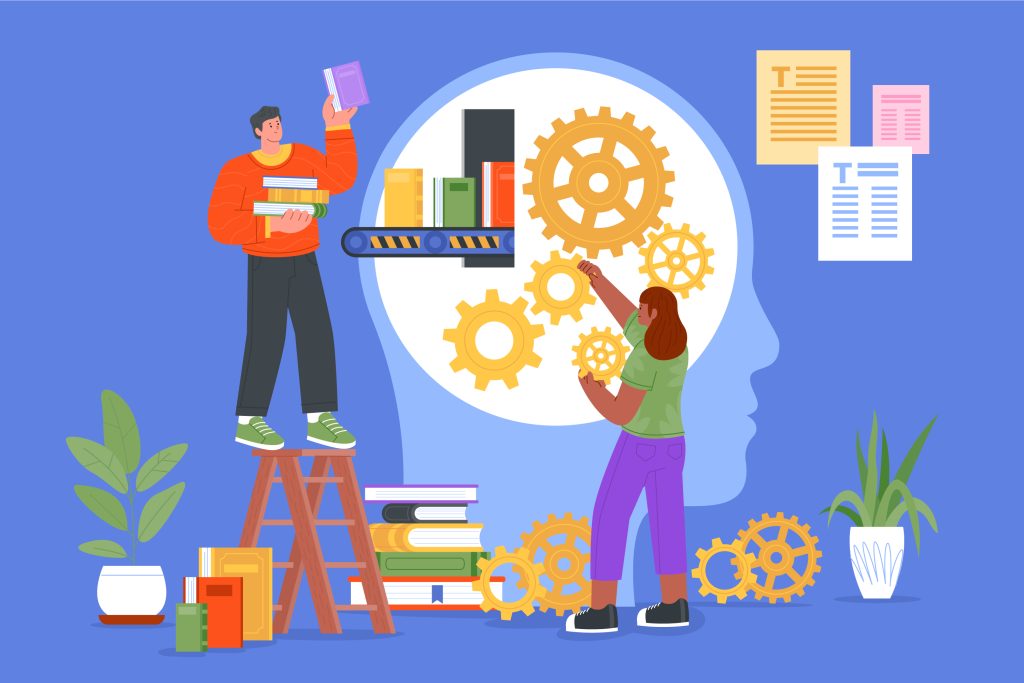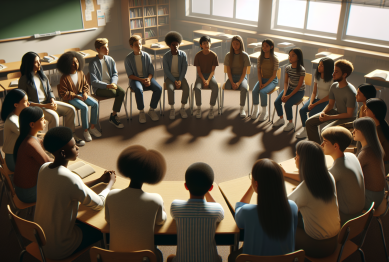The idea that “even simple repetition yields intelligence” is gaining traction today. With the rise of AI, spaced practice, microlearning, and data-driven pedagogy, educators and learners are using when repetition becomes intelligence to reshape how we acquire knowledge and skills.

The Science Behind Repetition as Learning
1. Spaced Repetition and Memory Consolidation
Repetition isn’t rote memorization—it’s strategic. The spaced repetition technique places review of material at increasing intervals, supporting long-term memory formation. Research in cognitive psychology shows that timing matters: reviewing just before forgetting boosts memory retention significantly .
-
How it works: You first review a concept after a day, then after five days, two weeks, and a month.
-
The effect: This strengthens neural pathways in the hippocampus and neocortex, turning repetition into durable knowledge instead of shallow recall.
2. The Rise of Adaptive Learning Platforms
Today’s educational tools—from Duolingo to Coursera—use algorithms to adjust repetition frequency based on individual performance. Learners get question types they miss more often, while exempting mastered content. This mirrors cognitive research findings and helps transform repetitive drills into intelligent learning paths .
Trends Turning Repetition into Real-World Intelligence
1. Microlearning in Corporate Training
Companies like Deloitte and IBM embrace short, daily learning bursts—often 5 minutes long. Repetition with micro-content enhances retention more than one-time training sessions. This shift translates repetition into improved employee performance and retention .
2. Language Learning Gets Smarter
Language platforms now leverage spaced repetition for vocabulary drills, grounding it in conversational AI. This repeated exposure within context triggers what’s known as “chunking”—the transformation of phrases into automated language patterns. Users report faster fluency development and better pronunciation skills than with traditional courses.
3. AI Tutors for Personalized Repetition
AI-driven tutors have emerged as big players. Platforms like Squirrel AI and Content Technologies use repetition based on students’ strengths and weaknesses. They dynamically alter lessons in real time, turning mere repetition into meaningful, personalized intelligence growth.
Practical Guide: Turning Repetition into Intelligence—4 Steps
Below is a step-by-step practical framework so learners and educators can use when repetition becomes intelligence effectively.
Step 1: Establish Clear Learning Goals
Set specific aims—whether mastering a math concept, speaking basic Chinese, or memorizing anatomy terms. Clear endpoints ensure focused repetition. Example: “I want to accurately conjugate 20 verbs in Spanish within two weeks.”
Step 2: Choose Your Repetition Method
-
Flashcards with Spaced Repetition Apps: Use Anki or Quizlet.
-
Microlearning Modules: Opt for apps delivering daily bite-sized lessons.
-
AI Tutors: Try platforms that auto-adjust repetition based on incorrect answers.
Step 3: Schedule Reviews Ahead of Time
Adopt a spaced repetition schedule. Tools usually handle this, but if practicing manually, follow a 1-day, 5-day, 12-day, and 30-day review pattern. Consistency is key—avoid drifting toward massed learning, which neglects the boosting power of interval spacing.
Step 4: Track, Adjust, Reflect
-
Track Performance: Note success or difficulty on each review.
-
Adjust Content: Increase repetition for weak areas; reduce for strong.
-
Reflect: After a month, assess whether concepts feel automatic. Successful repetition should feel effortless and integrated—not forced.
Bonus Tip: Mix Media
Combine repetition across formats—text, audio, visuals, problem-solving. This variation helps engage different cognitive channels. For example, to learn geometry, combine flashcards (visual), explain aloud (verbal), and solve problems (kinesthetic).
Why This Strategy Works So Well
1. Builds Deep Recall, Not Just Surface Memorization
Spaced repetition and multimodal review create connections across different neural networks. It’s not just remembering—it’s understanding and applying.
2. Harnesses the Testing Effect
Frequent low-stakes testing (like flashcard quizzes) strengthens memory. Research shows that retrieving information improves retention more effectively than passive restudy .
3. Encourages Learner Autonomy
Strategically designed repetition—especially via AI—empowers learners to direct their progress. It’s tailored intelligence-building, not one-size-fits-all instruction.
Emerging Innovations: Where Repetition Meets Tech
1. Neural Feedback Tools
Products like Focusmate use EEG headbands to monitor student attention. Algorithms then modify repetition content in real time—pausing when attention dips, or accelerating when engagement spikes.
2. Gamified Micro-Repetition
Apps such as Memrise or Brainscape package repetition within competitive games, leaderboard challenges, or streak rewards. This blends motivation with memory science, turning repetition into both fun and effective habit.
3. Community-Powered SRS (Spaced Repetition Systems)
Anki decks for niche interests—from medical flashcards to legal bar prep—are built collaboratively online. Users benefit from high-quality, schema-rich repetition tied to community input.
Case Study: Medical School and Intelligent Repetition
Medical students face massive content loads—anatomy, physiology, pathology. Traditionally, repetition was manual and ad-hoc. Now, platforms like Anki plug into medical school curriculums, automating spaced repetition for high-yield facts.
-
Result: Students who used spaced repetition actively outperformed peers in exams and USMLE results .
-
Why: Complex information (e.g., metabolic pathways) becomes part of long-term mental structure through distributed practice.
Pitfalls: Repetition Without Strategy Can Backfire
1. Risk of Mindless Drilling
Repeating facts without depth—like mindless flashcards—can reinforce surface-level knowledge. Without spacing, comprehension remains shallow.
2. Dishonoring Forgetting
Without testing recall just before forgetting, repetition is wasted. Effective spaced repetition relies on hitting that precise moment.
3. Overreliance on Technology
AI tools are powerful, but learners need to stay actively engaged. Passive repetition isn’t enough—the learner must retrieve, apply, and reflect.
Looking Ahead: The Future of Repetition-Based Intelligence
Personalized Learning Ecosystems
Expect systems that integrate AI tutors, biofeedback, VR/AR, and spaced repetition. Imagine augmented reality flashcards appearing in real-world contexts (e.g., tags on buildings in language lessons).
Corporate Skills Training Evolution
HR departments will continue shifting toward micro-repetition—daily growth prompts replacing quarterly training. Companies will invest in content drip campaigns that repeat core skills over time.
Fairness in Education
Adaptive repetition tools can level the playing field across income brackets. Free, quality repetition platforms could narrow learning gaps—making knowledge “sticky” for all.
Conclusion
From millennia-old mnemonic methods to cutting-edge AI tutors, the core truth holds: repetition, when structured smartly, becomes a powerful engine of intelligence. By crafting targeted, spaced repetition strategies, pairing with retrieval practice, and reinforcing through tech, learners—from students to professionals—can convert repetition into deep, lasting understanding.
The next time you think repetition is boring, remember: when repetition becomes intelligence, you’re not just practicing—you’re wiring your brain for a smarter future.
References
- Karpicke, J. D., & Roediger, H. L. (2008). The critical role of retrieval practice in long‑term retention. Psychological Science. [https://journals.sagepub.com/doi/10.1111/j.1467-9280.2008.02215.x]
- Kornell, N. (2009). Optimizing learning using flashcards: Spacing is superior to cramming. Applied Cognitive Psychology. [https://onlinelibrary.wiley.com/doi/10.1002/acp.1602]
- Pashler, H., Rohrer, D., Cepeda, N. J., & Carpenter, S.K. (2007). Enhancing learning and retarding forgetting: Choices and consequences. Psychonomic Bulletin & Review, 14(2), 187–193. Available on SpringerLink: https://link.springer.com/article/10.3758/BF03194050









